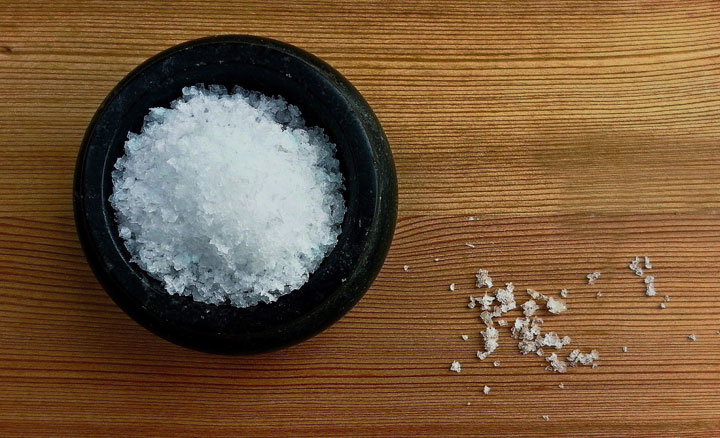Although sea salt and table salt are equal in terms of the amount of sodium they contain by weight, there are differences.

Table salt: Comes from a mine; trace minerals are eliminated in processing; has anti-caking additives to make it free-flowing; must have potassium iodide added, thus “iodized” salt, which helps prevent a thyroid condition called goiter; often has sugar added to prevent the potassium iodide from breaking down into iodine, which evaporates away.
READ MORE: If menus shared calories, sodium, would you make healthier choices?
Sea salt: Obtained by the evaporation of seawater and undergoes minimal processing; retains trace minerals and elements such as calcium, magnesium and potassium, but generally not in nutritionally significant amounts; can be iodized but often isn’t.
Taste: Sea salt has more taste than table salt, depending on its trace minerals, and aficionados say the taste differs depending on the waters it was taken from.
Colour and texture: Plain table salt is white, fine-textured and free-flowing; sea salt is generally coarser, irregular, compound crystals and can range from crunchy to flaky; it can be very white but also may vary in colour depending on its trace minerals.
READ MORE: Too little salt? Lower salt intake may need shaking up: studies
Cooking: Table salt is very easy to incorporate into recipes because of its texture; sea salt is easily crushed in the fingers for cooking but is often preferred as a “finishing” salt and added to dishes at the end of the cooking process.
Quantities: Because sea salt has more flavour, fans say you can use less of it to the same effect, although the estimates of how much less vary widely from 10 to 50 per cent. Also, although the two types of salt have the same sodium content by weight, five millilitres (one teaspoon) of fine-grain table salt weighs more than 5 ml (1 tsp) of large-grained sea salt, so the teaspoon of sea salt will have slightly less sodium. These two factors are why sea salt is sometimes said to be “healthier” than table salt.

Comments